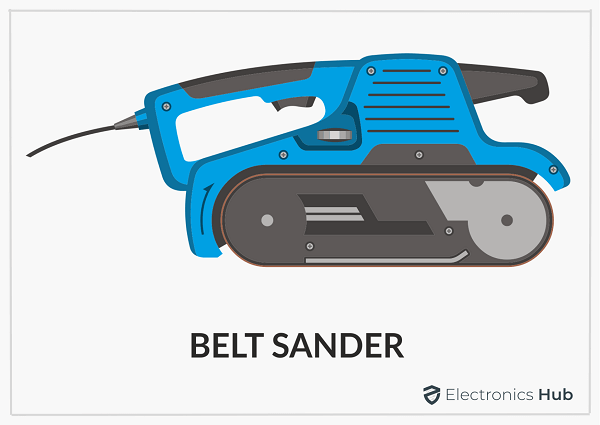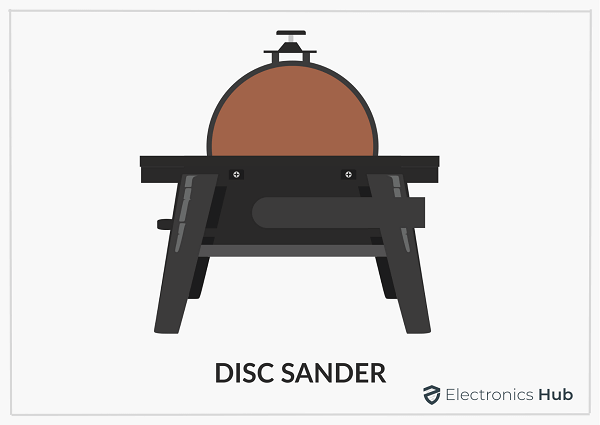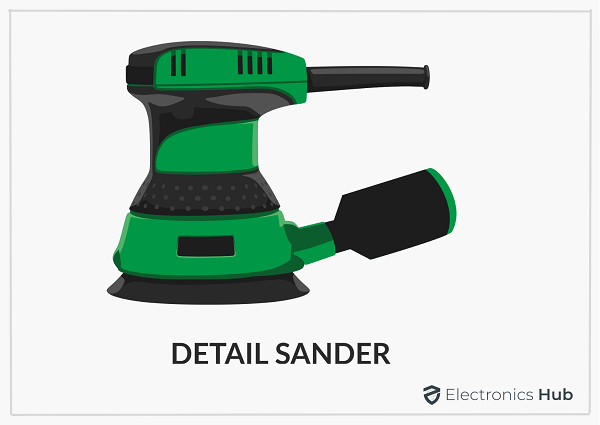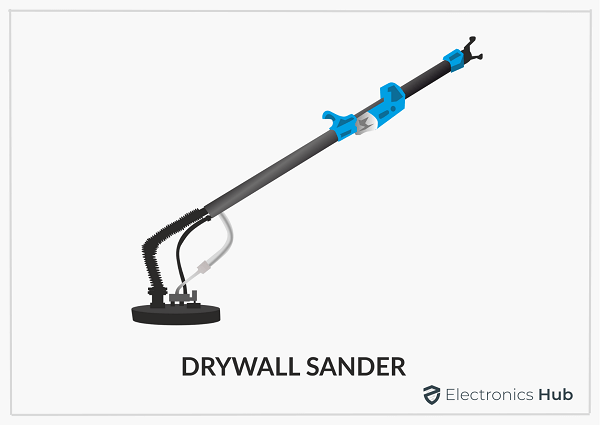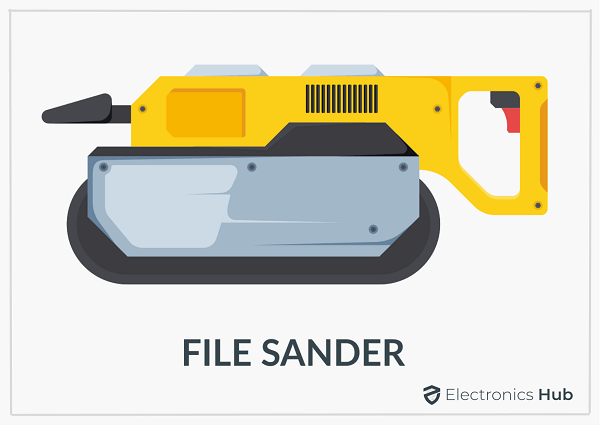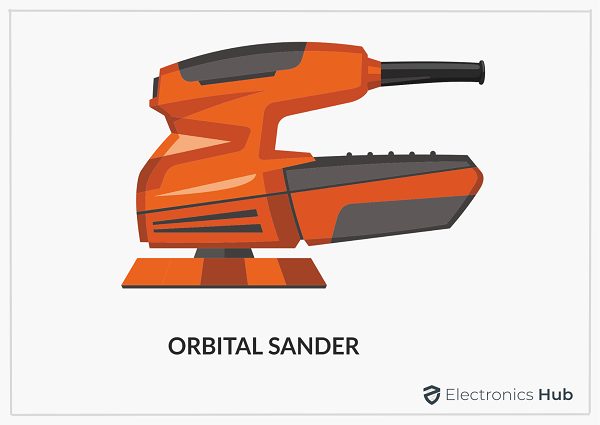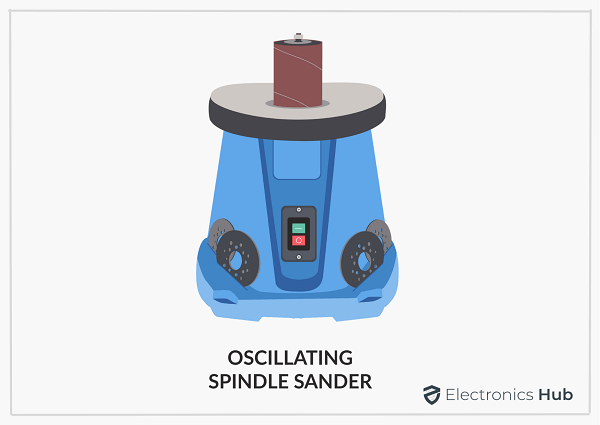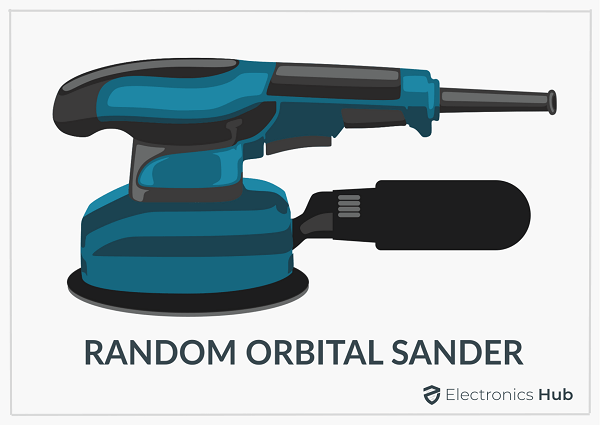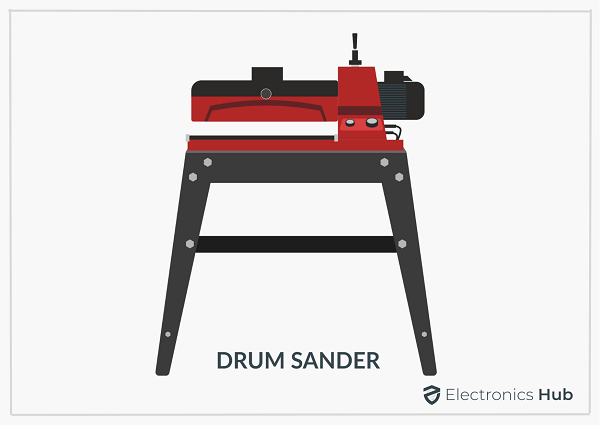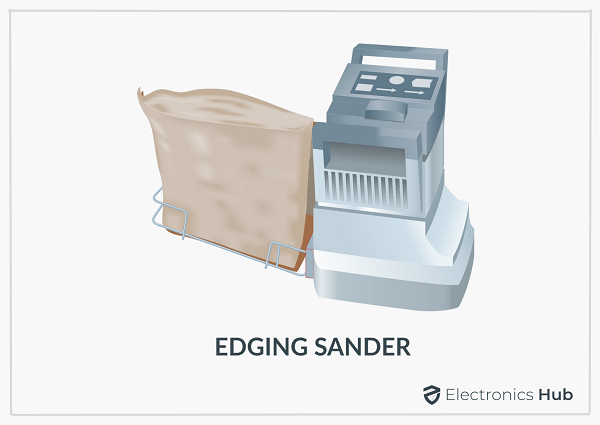Manual sanding is quite a tiresome process. It leaves you exhausted and any small lapse in concentration can leave stroke marks on the surface. As a result, it is very hard to obtain the required precision.
Thankfully there are a lot of tools out there that accomplish the same purpose. Sanding surfaces are a great example as they can easily remove the marks and flaws on the wood. However, regardless of the use, it is important to choose the appropriate Sanding Tool. Else, the process could be a bit complicated. Here we have explained various types of Surface Sanders, so if you are curious to more, keep reading.
Outline
ToggleSurface Sanders
1. Belt Sander
Belt Sander is a common sight in professional workshops. The design involves a sanding belt that is weld over two drums. The drums rotate when the motor is powered and the sanding belt is set into motion.
For large surfaces, it is better to go with bigger belts. However, the handling might not be easy but smaller belts do offer good control. Belt Sander is ideal for removing the finish from any wooden apparel like when altering the finish of old wooden furniture.
Also Check: Best Mini Belt Sander
2. Disc Sander
Disc Sanders are quite versatile as they can be used in a variety of applications. Moreover, they are fairly easy to use. Another advantage is that Disc Sanders are quite lightweight and hence portable. It weighs less than 5 pounds.
Disc Sander involves a wheel covered by Sandpaper and this wheel is powered by a motor. The Sander offers a good grip, which allows better balance and control. They are not expensive, so anyone could use them to smoothen plastic and wood.
3. Detail Sander
You might mistake the detail sander for steam iron and that is quite common. The compact size of this sander has many advantages like portability. Also, it can be used in small spaces where other Sanders cannot reach.
This sander can be used with a variety of sandpapers as well. The choice of sandpaper depends on the kind of job. Besides, changing the sandpaper is quite easy. The detail sander also offers 3 different positions. Palm grip, handle grip, and precision grip. Palm grip sander offers comfort while handle grip is useful in tight spaces.
4. Drywall Sander
Drywall Sander is basically a disc sander on a pole. Since they are fairly long, you can reach pretty much anywhere. The length is usually in the range of 10 to 13 feet. Their main purpose is to remove excess adhesive from drywall. They usually employ a rectangular sanding surface as well.
Such sanders usually employ a mechanism to collect dust. This makes it a very useful purchase. However, a premium quality Drywall is fairly expensive and will cost money.
5. File Sander
These Sanders employ a very narrow belt and as a result of the small size, they can be used in the smallest of spaces. File Sanders are preferred for works that require a lot of precision and detail. These sanders usually use electricity and in some cases, are powered by air.
File Sanders are very thin and quite light in weight. As a result, they are quite popular among users. File Sander is best for sanding at an angle. However, they are not meant for working with large surface areas.
6. Orbital Sander
These are effortless in use. They can be operated with one hand and are best suited for small projects. They are also referred to as Circular Sanders. These are available at a reasonable price and are quite compact in size.
The sanding surface is flat and square and paper is fixed onto this surface with clamps. Orbital Sanders are best suited for fine finishing jobs such as clearing putty, smoothening sharp edges, etc. It is not meant for heavy works. If you are not used to working with sanders, then an orbital sander is the best place to start.
7. Oscillating Spindle Sander
This sander consists of a drum that rises from a benchtop. When the sander works, the drum rises and is lowered on the spindle. This brings the wooden surface in touch with the drum. This mechanism prevents grooves and also decreases wear on the surface of the drum.
It is best used to sand down the edges of lumber. Moreover, it is fairly light and can be carried around. You can change the drum size depending on the kind of work. Moreover, certain models offer a feature that converts the drum into a belt sander.
8. Random Orbital Sander
It does resemble the orbital sander in some ways but here the pad used is round instead of square. The pad is capable of moving in circles and in circular orbits. Also, the pattern doesn’t leave swirls like a regular orbital sander.
The handling is a breeze and perfect for people who lack experience with sanding. Moreover, it is not super expensive and is a good choice for people who are on a tight budget. It can do everything that is possible with a belt sander and an orbital sander.
Floor Sanders
1. Drum Sander
Drum Sander is quite large in size and powerful, that’s why you will need around 2 people to transport this unit. It is important to have proper control, else it will leave marks on the floor. This is due to the amount of power it generates. They are best used to remove substances like adhesives and paint.
Due to the difficulty in maneuvering, drum sanders might not be ideal for sanding the floor corners. Due to this, some people prefer Edge Sanders. Ultimately, what separates Drum Sanders from others is the sheer power it packs.
2. Edging Sander
It is a smaller cousin of a drum sander. Edging sanders are used to sand the floor edges and stairs where the drum sander cannot reach. It is also quite powerful and if used irresponsibly could lead to floor damage or injury to the user.
It is much easier to handle than a drum sander and stays close to the floor. Also, it weighs less as well.
When to Use Different Types of Sanders
Now that you have gotten a brief idea about the different kinds of sanders in the market, let us see the situations in which they are best used for.
- Belt Sander-Sanding flat surfaces and floors.
- Disc Sander-Removing glue or rust from wood. Smoothening surfaces as well.
- Drum Sander-Sanding large surfaces and pieces. Also, for sharpening square edges.
- Detail Sander-Smoothening furniture and cabinets.
- Oscillating Spindle Sander-Used to sand shapes like curves and corners.
- Random Orbital Sander-Smoothening wooden furniture and carving fine details.
Types of Sanders – FAQs
Ans: A belt sander uses a continuous loop of sandpaper to quickly remove material from the surface. It is suitable for large, flat areas and heavy-duty sanding tasks, providing efficiency and power.
Ans: Random orbital sanders combine spinning and orbital movements to deliver a swirl-free finish. They are versatile and commonly used for both rough and finish sanding tasks on various surfaces.
Ans: Detail sanders are designed for intricate and hard-to-reach areas. Their compact size and triangular shape allow them to access tight spaces, making them perfect for detailed woodworking and refinishing projects.
Ans: Disc sanders are powerful tools commonly used for rapid material removal. While they are not typically used for fine finishing, they can be equipped with finer grit sandpaper for smoother results in some applications.
Ans: While many sanders are versatile enough to handle both wood and metal surfaces, it’s crucial to use the appropriate sandpaper and settings for each material. Some specialized sanders may be designed specifically for metalworking tasks.
Conclusion
Ultimately, you need to choose a sander that fits your needs. If you need to refine your floor, then it is better to go for edging or a drum sander. Else, if you want to add some finishing touches to the wooden floor, go for a surface sander. Hope you will get some information from this article.

